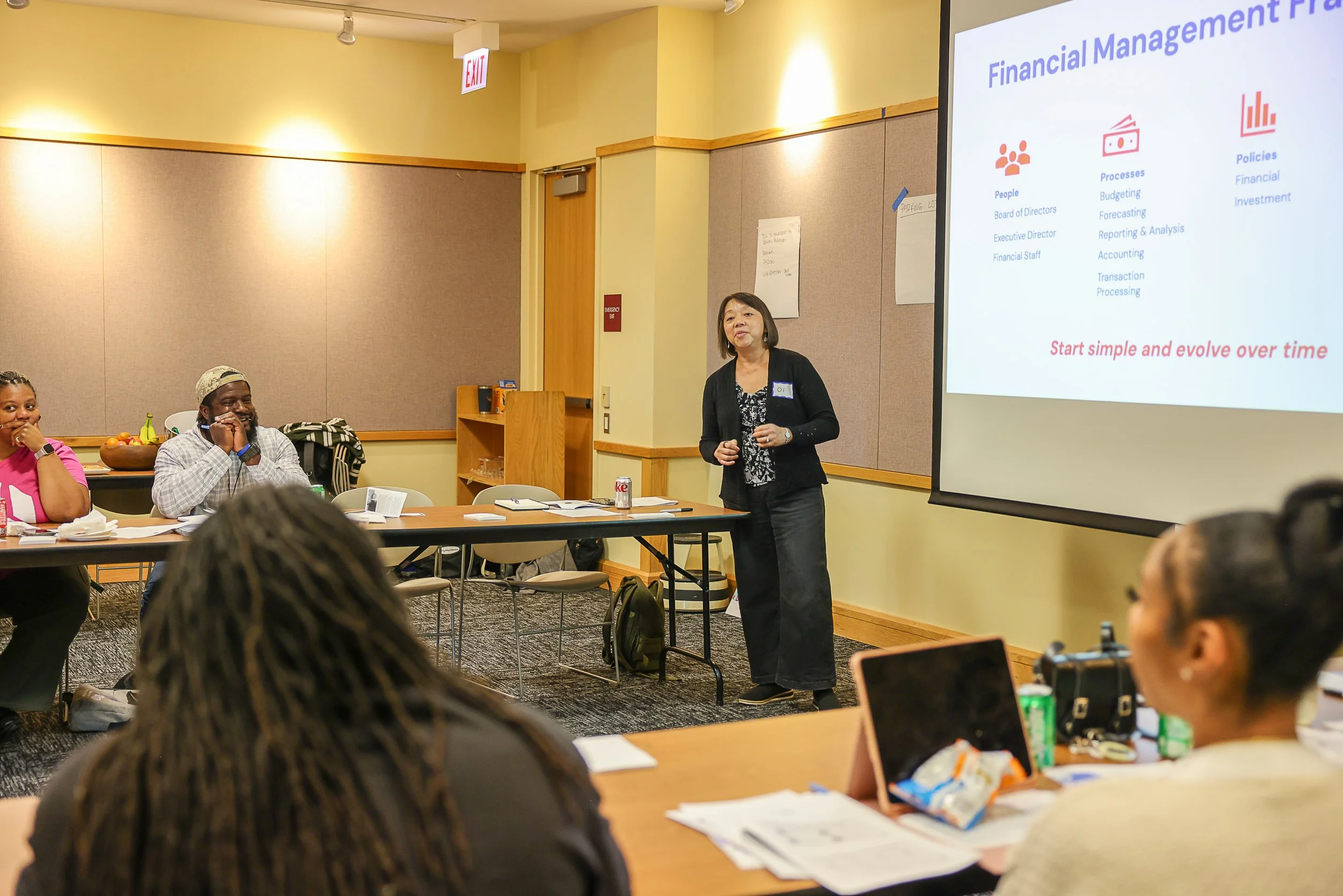From Expertise to Partnership: What It Looks Like When Consultants Build With—Not For—Nonprofits
At CVNC, our Neighborhood Collective and Capacity Catalyst programs are designed to amplify the work of community-rooted nonprofits. But what does that collaboration really look like through the eyes of a consultant?
We spoke with CVNC consultant Oi Eng-Crandus — who supported both the Roseland and Austin-Garfield Park Neighborhood Collectives - to learn more about how she approached her role in the Collectives. Her reflections underscore a core value of the program: the expertise consultants bring is not about prescribing solutions, but about helping organizations unlock and apply their own.
“I was drawn by the opportunity to help organizations that are already making a difference in their communities have even greater impact.”
Oi Eng-Crandus and members of the Roseland Collective.
This strengths-based perspective is at the heart of CVNC’s model. The organizations in our programs hold deep community knowledge and vision. Consultants step in to provide frameworks, tools, and space for dialogue that help leaders translate insight into action.
“With topics like financial management and budgeting, people often don’t know what they don’t know,” Oi explains. “My role is to cover key concepts and frameworks—but just as important is sharing real-life examples and facilitating discussion.”
In each workshop, consultants bring their subject-matter expertise into a facilitative environment—guiding conversation, modeling different approaches, and helping organizations apply ideas to their own contexts. Whether the focus is finance, governance, strategy, or communications, each session is grounded in relevance and relationship.
“I hope participants leave with a solid foundation on the basics plus practical insights. But more importantly, I want them to apply what they've learned to real challenges. It’s critical to prioritize and focus based on where each organization currently stands.”
To support this kind of tailored decision-making, Oi developed a tool: the Finance Roles and Staffing Models Comparison, designed to help nonprofits of different sizes reflect on their capacity and identify the right approach for their unique needs. The tool recognizes that there is no one-size-fits-all solution—it helps organizations evaluate constraints, priorities, and phased strategies to build financial management strength over time.
This is what makes the Neighborhood Collective and Capacity Catalyst distinct: they’re not just about one-time workshops. They’re about building frameworks, language, and relationships that help organizations make clear, confident, and informed decisions.

